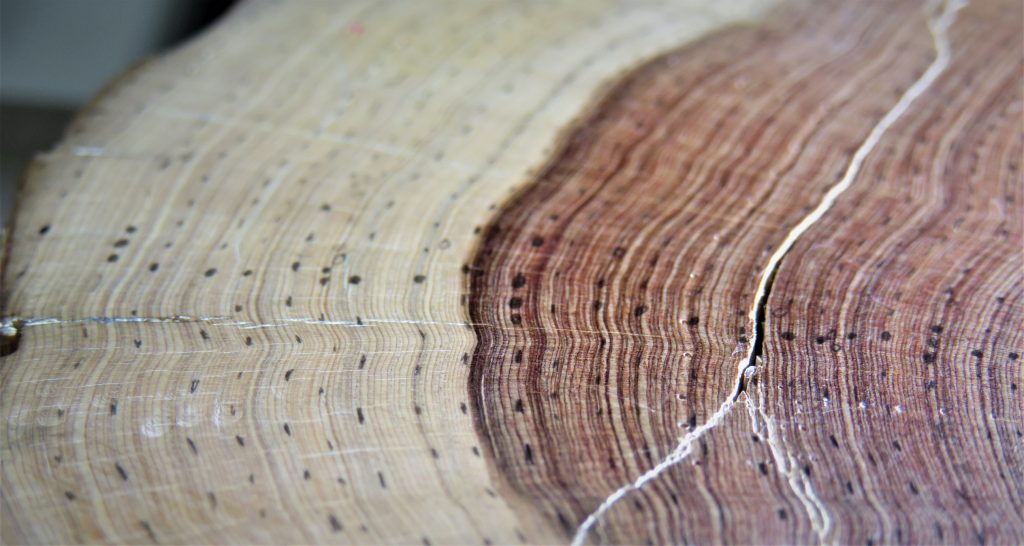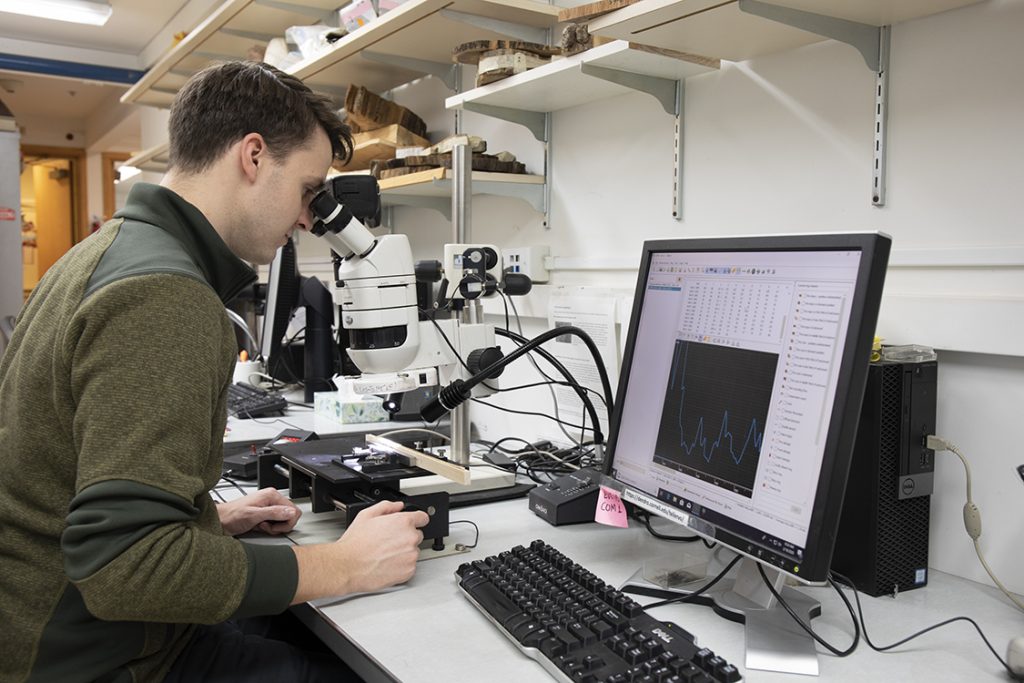The 13C Stable Isotopes Project, undertaken starting in 2020 by CRANE’s institutional partner at Cornell University, is an ambitious attempt to look at changes in the ratio of stable carbon-13 to carbon-12 isotopes, and use them to understand climate in eras before modern climate records. “If somebody had written down meteorological records every day, we wouldn’t need to do this,” says Sturt Manning, Distinguished Professor of Arts and Sciences in Classics at Cornell University, and Director of the Cornell Tree Ring Laboratory, who co-supervises the project with Cornell Research Associate Brita Lorentzen. Since such records did not exist during CRANE’s period and area of interest, the next best thing is what Manning calls “environmental or natural archives” – the climate information written into nature, and especially into the annual growth rings of trees, since they can be dated precisely.

The C-13 project builds on the work that has already been done at Cornell’s Tree Ring Laboratory to build up tree ring records from the CRANE region and periods of interest: “We’ve built a new 600-year record from a site in Northern Syria and other records from the east Mediterranean-Levant region,” Manning says, “so it’s because we have some of these records from the Bronze Age period that, now we can do this.” Beginning with the period lasting roughly 1450 to 750 BC, Manning and his colleagues are taking wood samples from archeological sites and examining the ratio of carbon isotopes within them, to find clues about what was going on in climate at the time. “If a plant is growing somewhere, and the climate changes to become more arid, for example,” Manning says, “that’s going to leave slight changes in the ratio of the carbon isotopes you will find in the plant.”
Once the COVID-19 pandemic ends and access to laboratories becomes less limited, the project will engage graduate and undergraduate students at Cornell and move ahead with more processing and measurements. With their help, the project will be able to collect the replicate data that are necessary to ensure a robust record and likely climate history.

By building these detailed “proxy” climate records, it may become possible to get a better idea of how changes in climate correlate with changes in human civilization. Manning says that there have always been hypotheses for the rise and fall of civilizations: “Often you blame invaders, or migration, and then there was a move to start blaming sources like climate, or extraterrestrial impacts.” With the C-13 project’s high-resolution records, it will be possible to say definitively that some hypotheses don’t work, “and we can see if climate change is, or is not, a likely driver in some key cases.”
Written by Jaime Weinman.
